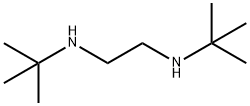N,N'-Diisopropylcarbodiimide , 98% , 693-13-0
Synonym(s):
N,N′-Diisopropylcarbodiimide;Diisopropylmethanediimine;N,N′-Diisopropylcarbodiimide;N,N′-Diisopropylcarbodiimide impregnated tablets;ChemDose, N,N′-Diisopropylcarbodiimide tablets
CAS NO.:693-13-0
Empirical Formula: C7H14N2
Molecular Weight: 126.2
MDL number: MFCD00065689
EINECS: 211-743-7
| Pack Size | Price | Stock | Quantity |
| 5ML | RMB23.20 | In Stock |
|
| 25ML | RMB40.80 | In Stock |
|
| 100ML | RMB118.40 | In Stock |
|
| 500ML | RMB364.00 | In Stock |
|
| 2.5L | RMB1680.80 | In Stock |
|
| others | Enquire |
PRODUCT Properties
| Melting point: | 210-2120C (dec) |
| Boiling point: | 145-148 °C(lit.) |
| Density | 0.815 g/mL at 20 °C(lit.) |
| vapor pressure | 34.9hPa at 55.46℃ |
| refractive index | n |
| Flash point: | 93 °F |
| storage temp. | Store below +30°C. |
| solubility | Soluble in chloroform, methylene chloride, acetonitrile, dioxane, dimethylformamide andtetrahydrofuran. |
| form | Liquid |
| color | Clear colorless to yellow |
| Sensitive | Moisture Sensitive |
| BRN | 878281 |
| Stability: | Volatile |
| InChIKey | BDNKZNFMNDZQMI-UHFFFAOYSA-N |
| LogP | 4.11 at 20℃ |
| CAS DataBase Reference | 693-13-0(CAS DataBase Reference) |
| NIST Chemistry Reference | 2-Propanamine, N,N'-methanetetraylbis-(693-13-0) |
| EPA Substance Registry System | 2-Propanamine, N,N'-methanetetraylbis- (693-13-0) |
Description and Uses
Diisopropylcarbodiimide (DIC) is a clear liquid that can be easily dispensed by volume. It slowly reacts with moisture from the air, so for long term storage the bottle should be flushed with dry air or inert gas and sealed tightly. It is used in peptide chemistry as a coupling reagent. It is very toxic and caused contact dermatitis in a laboratory worker.
N,N'-Diisopropylcarbodiimide is used as a reagent in synthetic organic chemistry. It serves as a chemical intermediate and as a stabilizer for Sarin (chemical weapon). It is also used in the synthesis of peptide and nucleic acid. Further, it is used as an antineoplastic and involved in the treatment of malignant melanoma and sarcomas. It is mainly used in amikacin, glutathione dehydrants, as well as in synthesis of acid anhydride, aldehyde, ketone, isocyanate; when it is used as dehydrating condensing agent, it reacts to dicyclohexylurea through short-time reaction under normal temperature.
Safety
| Symbol(GHS) |     GHS02,GHS05,GHS06,GHS08 |
| Signal word | Danger |
| Hazard statements | H226-H317-H318-H330-H334 |
| Precautionary statements | P210-P233-P280-P303+P361+P353-P304+P340+P310-P305+P351+P338 |
| Hazard Codes | T+,T,F,Xn |
| Risk Statements | 10-26-36/37/38-41-42/43-37/38 |
| Safety Statements | 26-36/37/39-45-38-28A-16-22 |
| RIDADR | UN 2929 6.1/PG 1 |
| WGK Germany | 3 |
| RTECS | FF2175000 |
| F | 10-21 |
| Hazard Note | Flammable/Highly Toxic/ |
| TSCA | Yes |
| HazardClass | 6.1 |
| PackingGroup | II |
| HS Code | 29252000 |
| Hazardous Substances Data | 693-13-0(Hazardous Substances Data) |





